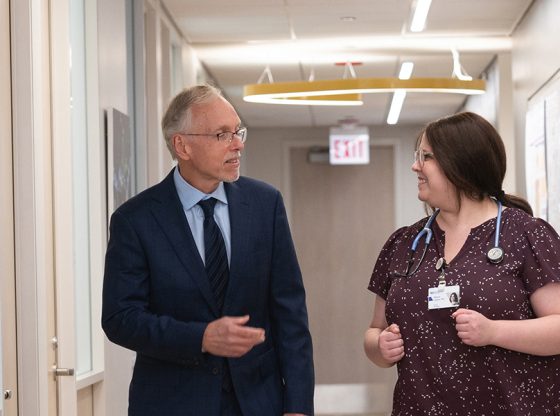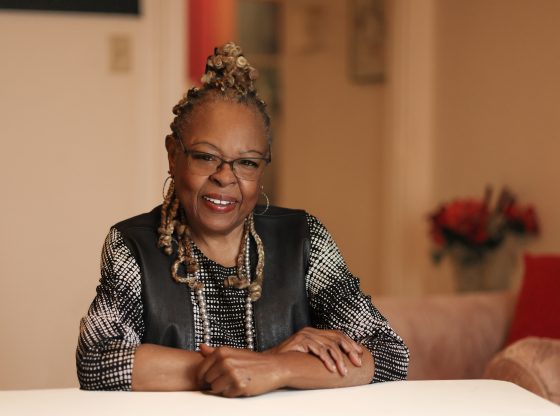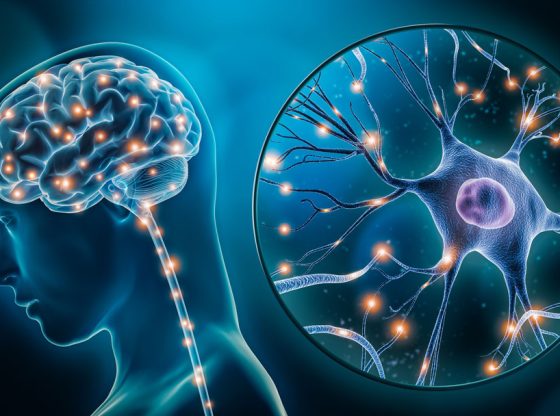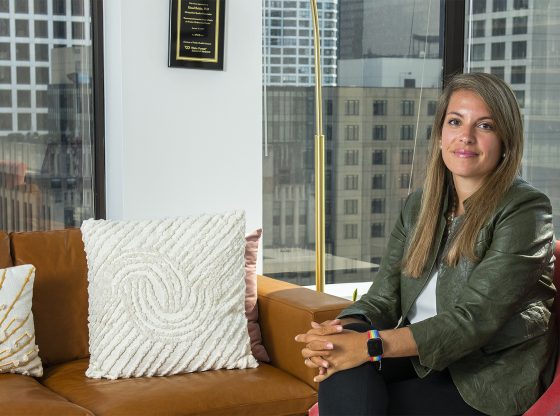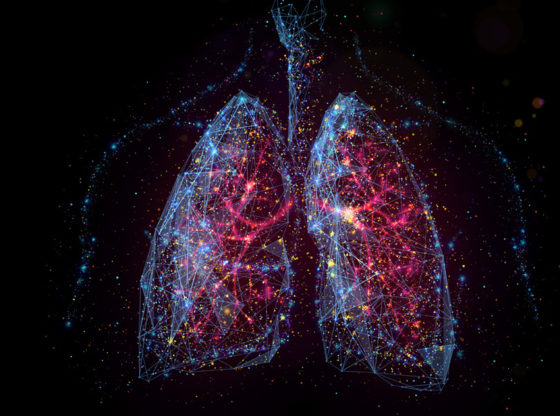by GINA BAZER | photography by MONICA WNUK
Center for Food Allergy & Asthma Research director Ruchi Gupta, MD, MPH, leads with a personal touch.
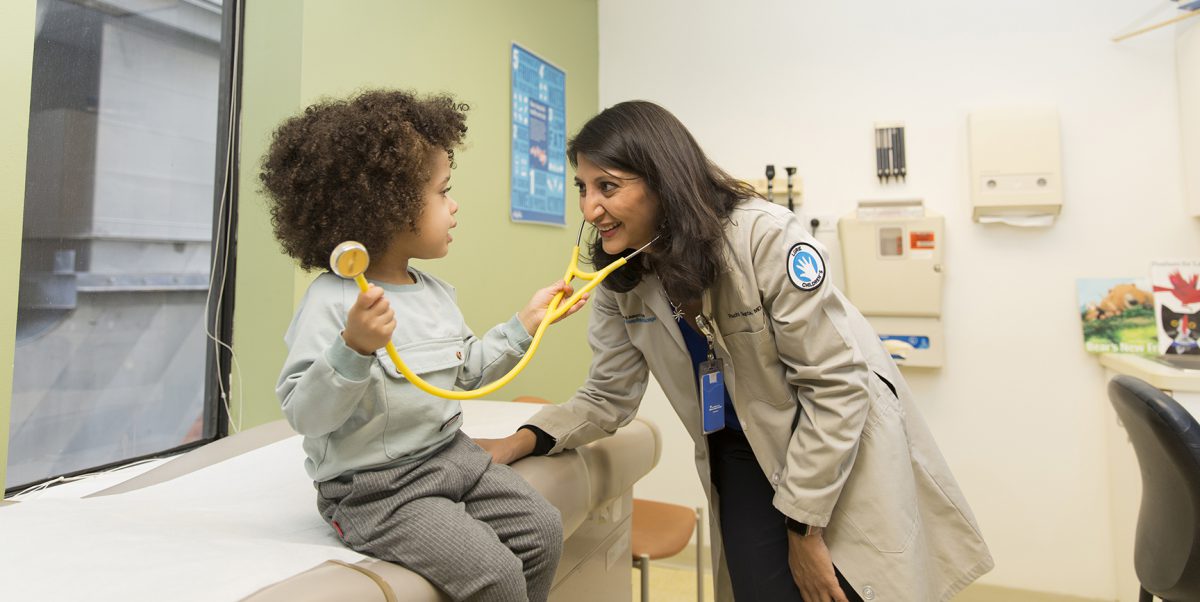
A small comic strip displayed in the office of Ruchi Gupta, MD, MPH, serves as a sort of mission statement. The first frame shows an adult telling a child, “When I was your age, there were no food allergies.” The next one shows that same child, now grown up, telling a younger kid, “When I was your age, there were food allergies.”
Arriving at that “someday” when food allergies are a distant memory is the ultimate destination for Gupta, a professor of Pediatrics and of Medicine in the Division of Allergy and Immunology, and a Northwestern Medicine pediatrician, who also happens to be the mother of a teenage daughter with peanut and tree nut allergies.
A prominent national expert on allergy prevalence, treatment, and advocacy, Gupta was named last year to be the founding director of the new Center for Food Allergy & Asthma Research (CFAAR) at Northwestern’s Institute for Public Health and Medicine (IPHAM). The center was created to become a hub for investigators across Northwestern and Ann & Robert H. Lurie Children’s Hospital, who are continually making new epidemiological, clinical, and basic-science discoveries about asthma and allergies. The new center will also serve as a resource for patients seeking support and treatment.
A CAREER IGNITED BY QUESTIONS
Growing up in Louisville, Kentucky, Gupta was always interested in science, but figuring out her specialty took years of exploration. When she started medical school, a fascination with the eye led her to believe she would become an ophthalmologist. Her interests later gravitated toward women’s health, but, ultimately, she chose pediatrics because “there was something about watching the development of a child over time — and guiding their disease management — that I wanted to be a part of.”
The answer of what to specialize in presented itself when, as a resident at Seattle Children’s Hospital, Gupta noticed how many of her Somali patients were ending up in the hospital with asthma attacks compared to her white patients. A barrage of questions (“Is there something we’re doing wrong as clinicians? Is it an access to care or medication issue? Is there something unique by race or ethnicity in how asthma presents and should be treated?”) flooded Gupta’s mind, foreshadowing the trajectory of her career.
After her residency, Gupta accepted a health-services research fellowship at Harvard Medical School. In 2004, armed with the skill set to conduct large-scale population studies, Gupta joined Northwestern’s faculty, which soon found her mapping asthma in Chicago. “We found rates that varied between 1 percent and 44 percent, depending on the neighborhood people lived in,” recalls Gupta. The study, published in the Journal of Allergy and Clinical Immunology, was picked up by an NPR reporter, who asked Gupta to accompany her to the Englewood neighborhood to meet some of the people behind the data.
“That opened my eyes to that fact that I need to do more in the communities I studied, and not just crunch numbers,” says Gupta. “Now, we work with people — especially high school students — in all communities of Chicago to help us understand the health issues that impact them and develop solutions together.”
Team Effort
Gupta and her team have contributed significantly to academic research surrounding the economic cost of food allergy and asthma, as well as how to improve management, address disparities in care, and implement school interventions and policies surrounding these conditions.
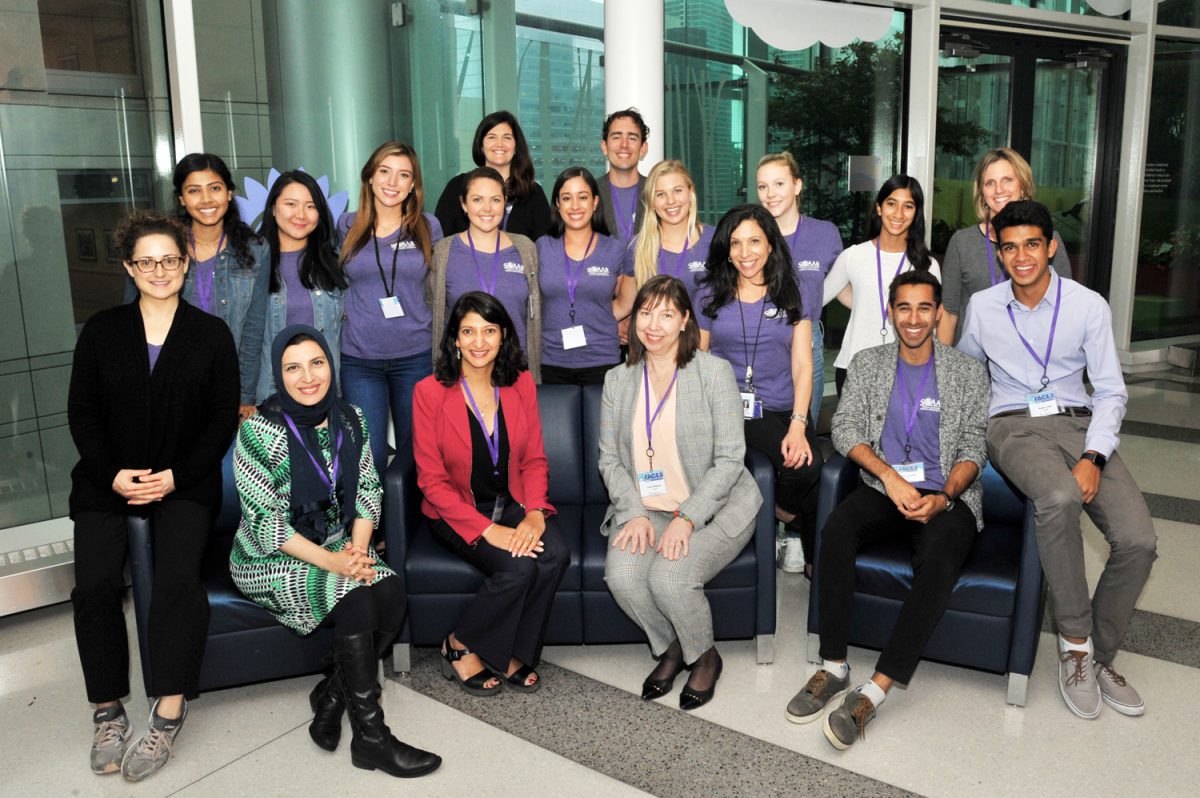
When the Professional Becomes Personal
While Gupta’s early research was in asthma, her focus took a turn when, 16 years ago, she met a family with two young children struggling with food allergies. As she dove into this largely uncharted area, Gupta didn’t realize her work would so profoundly overlap with her life.
“Three years into it, my son, who loves peanut butter and jelly sandwiches, touched my then-1-year-old daughter’s face and she broke out in hives,” Gupta recalls.
This changed everything for Gupta, whose daughter, Riya, is now 13 and son, Rohan, is 17. Both kids are heavily involved with health advocacy, education, and service, as is her husband Tarun Jain, MD, who is a Northwestern Medicine physician and an associate professor in the Division of Reproductive Endocrinology and Infertility.
“When you go through it yourself, you see firsthand how it affects your patients’ lives,” she says. “We are asking the same questions and living through the daily challenges. Reading labels and asking, ‘Can she eat this?’ Wondering if a reaction warrants a trip to the emergency room. This adds so much to my research.”
Over the past decade, Gupta and her team have brought an unprecedented understanding of the prevalence of food allergy in the United States. Their data, collected from more than 40,000 adults and 40,000 children, has demonstrated just how widespread food allergies are — and the findings are driving life-saving policy.
In 2011, a study authored by Gupta published in Pediatrics found that 8 percent of children in the U.S. have at least one food allergy, and 40 percent of those kids had already experienced a life-threatening allergic reaction. This knowledge helped Chicago Public Schools ramp up their health safety precautions, including stocking every nurse’s office with epinephrine. In 2019, Gupta’s team published more data about childhood allergies in Pediatrics and a study showing that about 1 in 10 adults have food allergies (with many developing them in adulthood) in JAMA Network Open.
Another study in JAMA Network Open showed that allergies to sesame affect more than 1 million children and adults in the U.S. Now, along with her colleagues at the Center, Gupta is advocating the Food and Drug Administration (FDA) to add sesame to the list of the top eight allergens (peanuts, tree nuts, milk, egg, shellfish, finfish, soy, wheat) labeled on products. Gupta won at least part of her battle in Illinois, which in 2019 enacted a law requiring Illinois food manufacturers to label any products they make that contain sesame. The center is also pushing for better precautionary (or “may contain”) allergen labeling, which many food manufacturers offer voluntarily, but in a highly inconsistent manner, leaving consumers to make their own decisions about the safety of the product.
In the Community
Community engagement is one CFAAR’s core missions. This past year, the center and Northwestern University co-hosted a series of “health leader” workshops for 100 Chicago public high school students with the goal of empowering the students to become health advocates through educating their own peers and community members about health issues that matter to them, including food allergies, gender identity, and violence. The students created vision boards and produced public service announcements on their chosen topics. The center also hosts the biennial Food Allergy Conference for Education and Science with Lurie Children’s, which brings together food allergy families, clinicians, and scientists from throughout the Midwest for two days of learning.
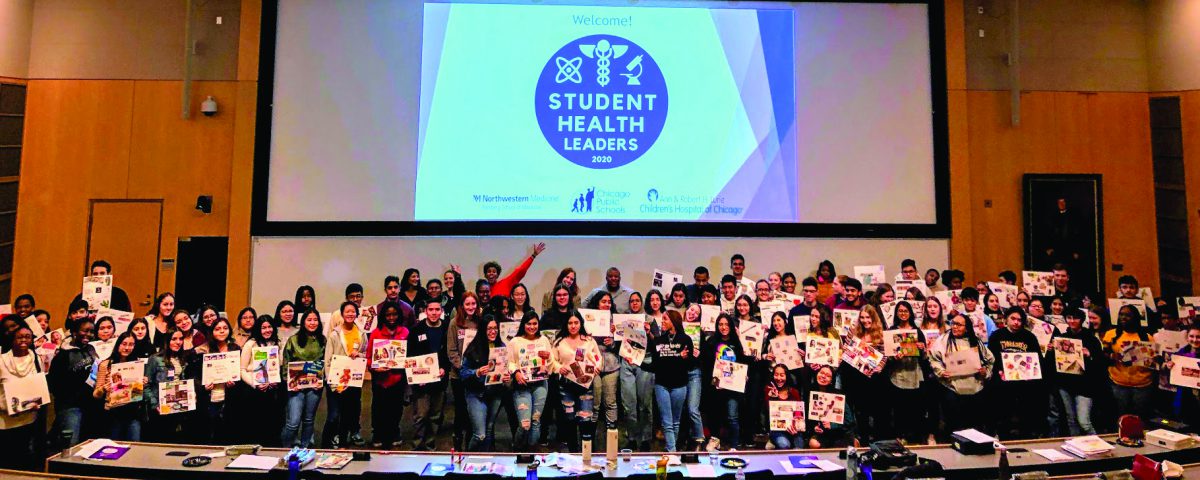
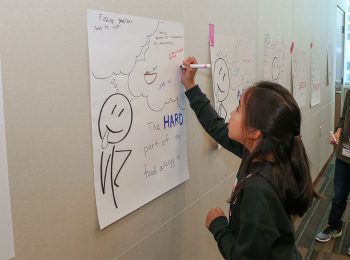


Committed to improving outcomes
One the questions Gupta gets asked most often is why the prevalence of allergies has increased.
“The answer is so complex, and we don’t really have a complete answer, but we have a lot of hypotheses,” she says. “It’s hygiene, it’s microbiome, it’s C-sections, it’s antibiotics, it’s how we eat.”
One theory that has taken hold, according to Gupta, is that “if the food protein is first introduced as an infant through broken skin, then it skews your immune system to go down the path of allergy, and if you introduce the food first through your mouth — through the gut — it goes the normal route.” This theory was tested through the Learning Early About Peanut Allergy (LEAP) study published in the New England Journal of Medicine in 2015. This study found an 80 percent reduction in peanut allergy in high-risk infants fed peanut products between 4 to 11 months of age.
In 2017, this data prompted new clinical guidelines — which Gupta helped develop — from the National Institutes of Allergy and Infectious Diseases recommending that physicians assess their patients’ risk and if it is low or moderate, encourage caregivers to introduce peanut products to their children around six months to help prevent them from developing a peanut allergy.
“But implementation is challenging,” says Gupta. “Well-visits are jam-packed. Parents have lots of questions, and it’s hard to fit every instruction in. Plus, there is fear on the part of both parents and physicians — what if they go home and do this, and the child has a reaction?”
After finding that only 30 percent of U.S. doctors are fully implementing the food allergy guidelines, Gupta received a grant from the National Institutes of Health (NIH) to investigate why and test how electronic clinical supports could improve pediatricians’ adherence and decrease peanut allergy incidence. In the process, she intends to study a subset of the infants through a range of other lenses, from their genetics to their microbiome.
“We’re hoping to contribute even more data to those common hypotheses,” says Gupta.
The Center for Food Allergy & Asthma Research has also received grants from the NIH to study racial and ethnic disparities among children with food allergies and works to improve resources and access for underserved communities. Additionally, in partnership with the large advocacy organization Food Allergy Research & Education and its over 30 clinical academic sites, center investigators are creating a nationwide database that captures information about the thousands of allergy sufferers across the U.S. This repository will also track the effects of new treatments, such as Palforzia, an immunity-building, peanut powder product designed to help reduce reactions, tested at Lurie Children’s and recently approved by the FDA.
This growing body of collaborative research inspires Gupta every day. And, as is her nature, she is always asking more questions and pushing for more answers.
It all comes back to the future depicted in that comic strip.
“As a center, we’re asking, ‘Can we eliminate the burden of allergies for the next generation?’” says Gupta. “It’s a long shot, but it’s what keeps us going.”



